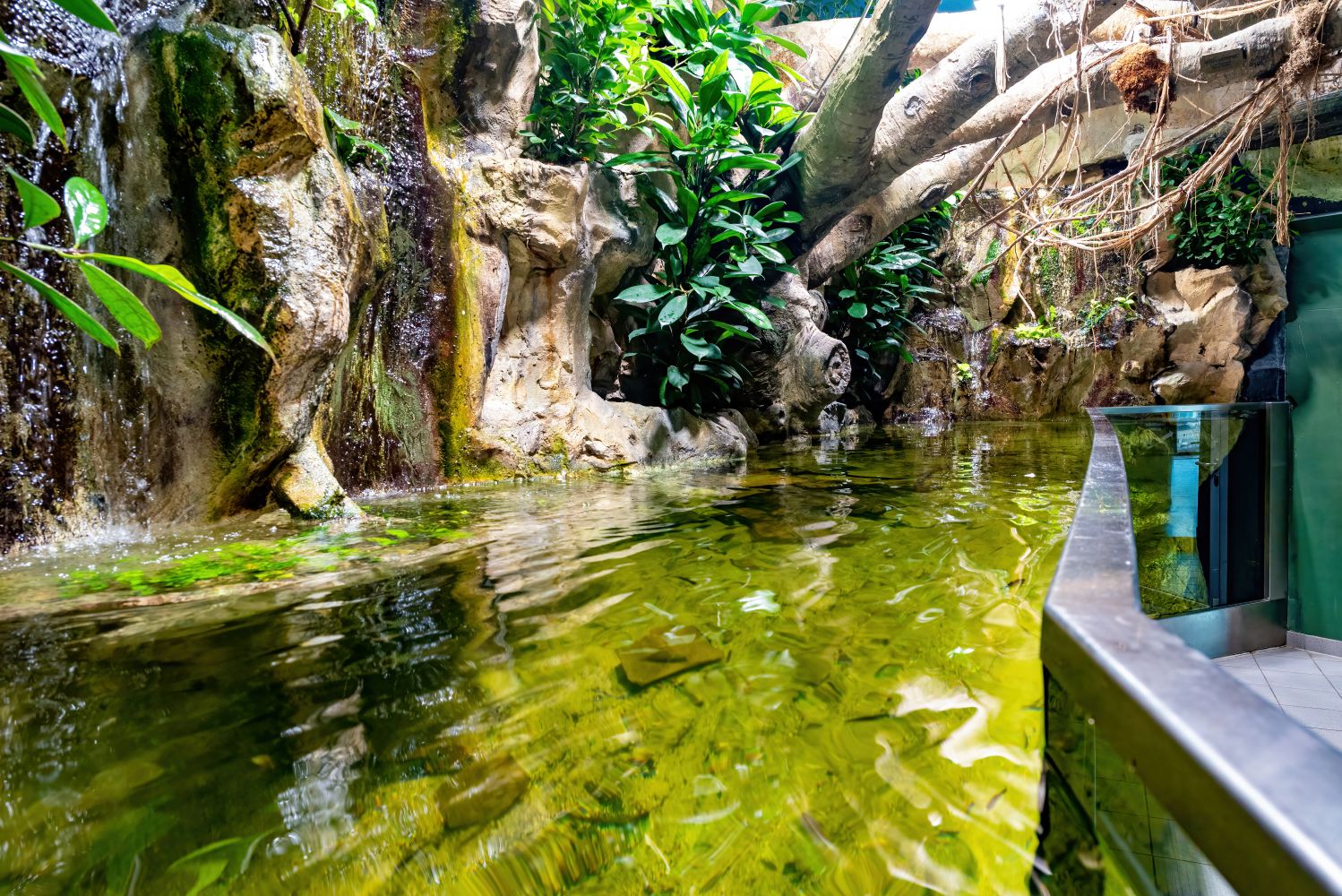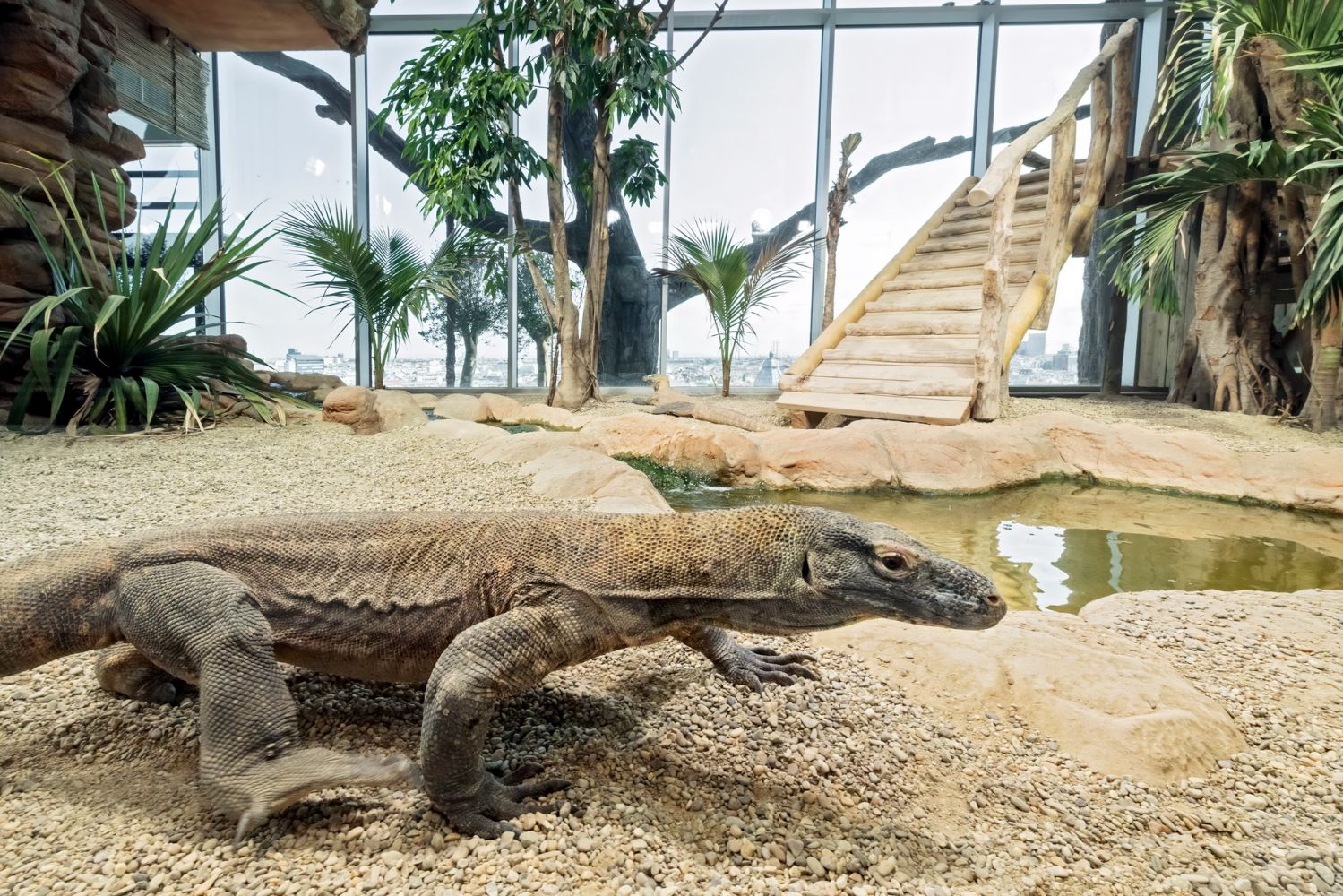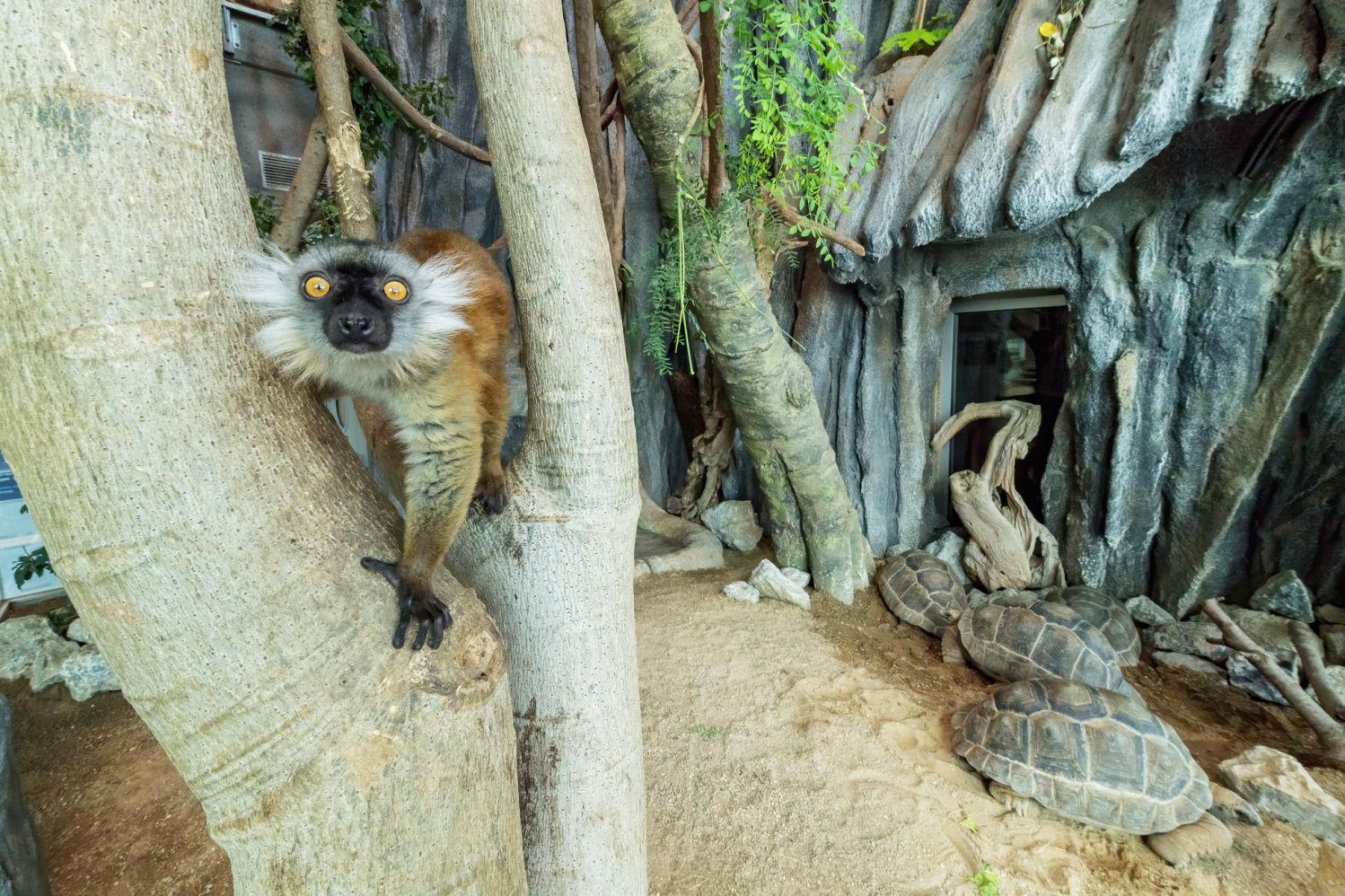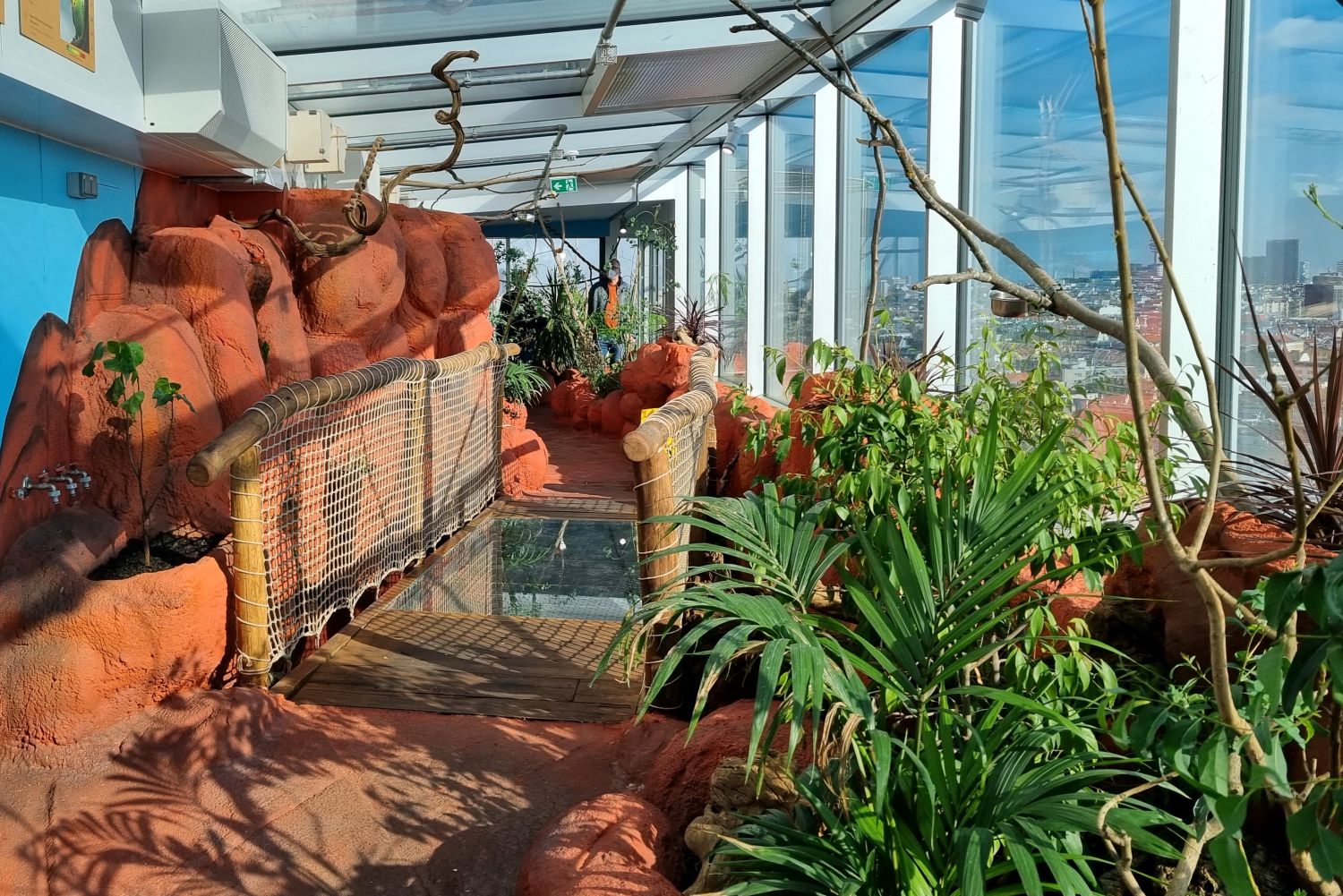Floor 9
Get ready to be amazed on the 9th floor: Amazonas, Madagascar, Komodo and Australia – embark on a little trip around the world!
After a complete revision of the former Amazonas Passage, which required renovation, the House des Meeres included a new and fascinating river theme in the zoo: the Congo Basin! The little-known fauna has a lot to offer, with large schools of tetras, rare catfish, and cichlids that make aquarium enthusiasts' hearts beat faster. With a bit of luck, visitors can catch a glimpse of the nocturnal galagos, also known as bushbabies, exploring their new home during the early evening hours. These primates are perfectly adapted to nocturnal life: they have large eyes that help them see in low light, and large, collapsible ears that can rotate independently like radar dishes to locate prey in the darkness.
Next, we move on to our largest lizards! In 2018, three young Komodo dragons moved in with us. The offspring from Prague Zoo are part of the European Endangered Species Programme. Back then, they weighed around 3 kilograms and measured about 1.5 meters in length. Over the following years, the animals experienced impressive growth: today, they are about 3.5 meters long and weigh around 80 kilograms. In 2020, they moved into their spacious new enclosure on Level 9. Komodo dragons are the largest lizards in the world. In their native habitat—the Indonesian islands—they are skilled hunters. Unlike most other lizards, Komodo dragons possess an effective venom. This venom is hemotoxic, meaning it prevents the blood of their prey from clotting. As a result, the prey quickly bleeds out, allowing the dragons to enjoy their meal without any rush.
In the meantime, the brothers now live as a pair—one animal has been relocated.
Right across from the monitor lizards, famous fur animals moved in in 2020: Four ring-tailed lemurs dominate the almost 140 m² large Madagascar area, which consists of indoor and outdoor areas and is 8 meters high. The grey monkeys with the long black and white ringed tail gained immense popularity thanks to the movie "Madagascar". The particularly charming detail about our group is, that the four animals were actually born in Vienna! Years ago, however, they moved to the Augsburg Zoo in Germany, where they were expelled from the group and and were then returned to us, to the Haus des Meeres. Two black lemurs (same group of monkeys as ring-tailed lemurs) also inhabit this enclosure.
A connecting corridor takes you straight to Australia: a 70-meter long tour across 260 m² leads through the the Australia loop which is now a fully paned terrace with the characteristic ear-shaped platforms. Visitors move freely between many noisy and colourful species of parakeets and fish such as lungfish, all of which is paired with the perfect visual ambience.
How do you "build" Australia? Construction work to enclose the terrace area began in 2019 (completion of the system in the spring of 2022). Just imagine enclosing 260 m² with maximum insulation at a height of 35 m! At the same time, the encasement had to be optically transparent and "inconspicuous". The entire structure is made up of triple safety glass with an insulating coating and an aluminium framework reinforced with steel inserts as the supporting structure. These were hoisted to a height of 35 m with cranes and were installed accordingly. Open areas for the animals, nine ventilation flaps and large sliding doors (protection against overheating) were created on the ear-shaped platforms. Further work included the insulation of the concrete walls and the terrace floor in addition to the installation of heating and air conditioning devices for an even temperature distribution.



